1.3E: Campos de dirección para ecuaciones de primer orden (ejercicios)
- Page ID
- 114594
Ejercicios para la Sección 1.3
En los Ejercicios 1—11 se dibuja un campo de dirección para la ecuación dada. Dibuja algunas curvas integrales.
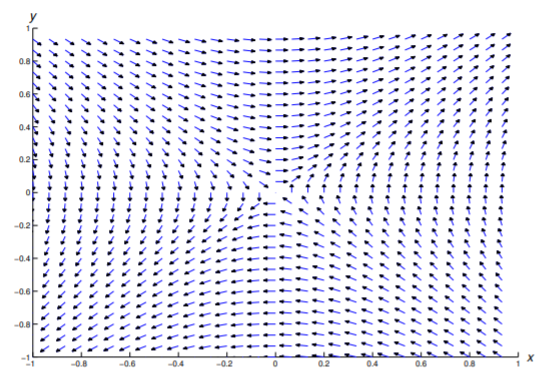



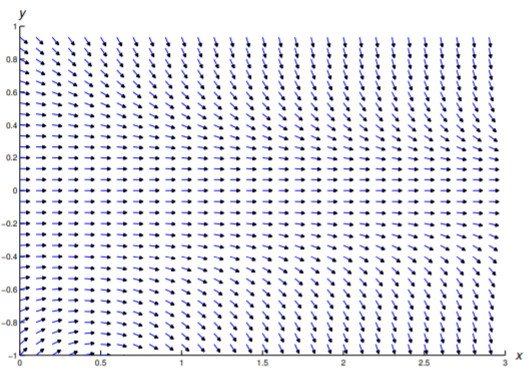
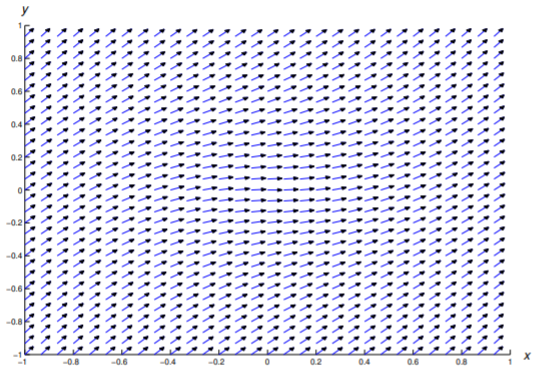

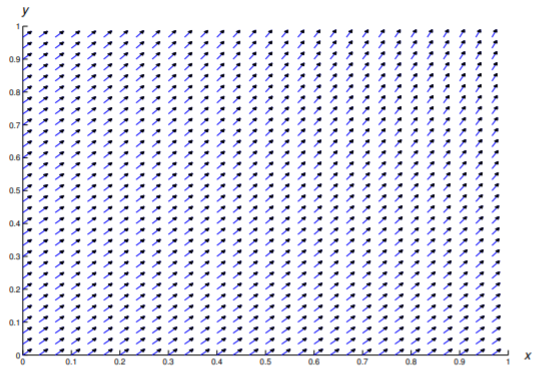
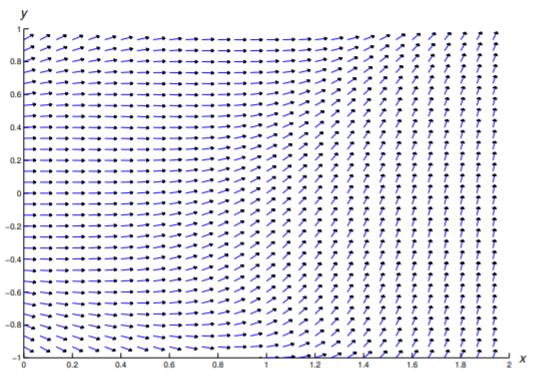

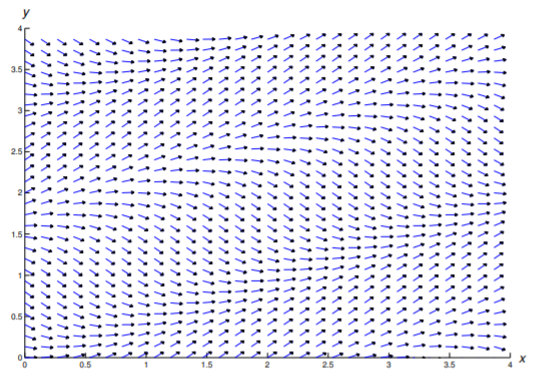
En los Ejercicios 12 - 22 construir un campo de dirección y trazar algunas curvas integrales en la región rectangular indicada.
12. \(y'=y(y-1); \quad \{-1\le x\le 2,\ -2\le y\le2\}\)
13. \(y'=2-3xy; \quad \{-1\le x\le 4,\ -4\le y\le4\}\)
14. \(y'=xy(y-1); \quad \{-2\le x\le2,\ -4\le y\le 4\}\)
15. \(y'=3x+y; \quad \{-2\le x\le2,\ 0\le y\le 4\}\)
16. \(y'=y-x^3; \quad \{-2\le x\le2,\ -2\le y\le 2\}\)
17. \(y'=1-x^2-y^2; \quad \{-2\le x\le2,\ -2\le y\le 2\}\)
18. \(y'=x(y^2-1); \quad \{-3\le x\le3,\ -3\le y\le 2\}\)
19. \(y'= {x\over y(y^2-1)}; \quad \{-2\le x\le2,\ -2\le y\le 2\}\)
20. \(y'= {xy^2\over y-1}; \quad \{-2\le x\le2,\ -1\le y\le 4\}\)
21. \(y'= {x(y^2-1)\over y}; \quad \{-1\le x\le1,\ -2\le y\le 2\}\)
22. \(y'=- {x^2+y^2\over1-x^2-y^2}; \quad \{-2\le x\le2,\ -2\le y\le 2\}\)
23. Renombrando adecuadamente las constantes y variables dependientes en las ecuaciones
\[T' = -k(T-T_m) \tag{A}\]
y
\[G'=-\lambda G+r\tag{B}\]
discutido en la Sección 1.2 en relación con la ley de Newton de enfriamiento y absorción de glucosa en el cuerpo, podemos escribir ambos como
\[y'=- ay+b, \tag{C}\]
donde\(a\) es una constante positiva y\(b\) es una constante arbitraria. Así, (A) es de la forma (C) con\(y=T\),\(a=k\), y\(b=kT_m\), y (B) es de la forma (C) con\(y=G\),\(a=\lambda\), y\(b=r\). Encontraremos ecuaciones de la forma (C) en muchas otras aplicaciones en el Capítulo 2.
Elige un positivo\(a\) y uno arbitrario\(b\). Construir un campo de dirección y trazar algunas curvas integrales para (C) en una región rectangular de la forma\[\{0\le t\le T,\ c\le y\le d\}\]
del\(ty\) -avión. \(T\)Varía\(c\),, y\(d\) hasta que descubras una propiedad común de todas las soluciones de (C). Repita este experimento con varias opciones de\(a\) y\(b\) hasta que pueda declarar esta propiedad precisamente en términos de\(a\) y\(b\).
24. Renombrando adecuadamente las constantes y variables dependientes en las ecuaciones
\[P'=aP(1-\alpha P) \tag{A}\]
y
\[I'=rI(S-I) \tag{B}\]
discutido en la Sección 1.1 en relación con el modelo poblacional de Verhulst y la propagación de una epidemia, podemos escribir ambos en la forma
\[y'=ay-by^2, \tag{C}\]
donde\(a\) y\(b\) son constantes positivas. Así, (A) es de la forma (C) con\(y=P\),\(a=a\), y\(b=a\alpha\), y (B) es de la forma (C) con\(y=I\),\(a=rS\), y\(b=r\). En el Capítulo 2 encontraremos ecuaciones de la forma (C) en otras aplicaciones.
Elija números positivos\(a\) y\(b\). Construir un campo de dirección y trazar algunas curvas integrales para (C) en una región rectangular de la forma\[\{0\le t\le T,\ 0\le y\le d\}\]
del\(ty\) -avión. \(T\)Varía y\(d\) hasta que descubras una propiedad común de todas las soluciones de (C) con\(y(0)>0\). Repita este experimento con varias opciones de\(a\) y\(b\) hasta que pueda declarar esta propiedad precisamente en términos de\(a\) y\(b\).
Elija números positivos\(a\) y\(b\). Construir un campo de dirección y trazar algunas curvas integrales para (C) en una región rectangular de la forma\[\{0\le t\le T,\ c\le y\le 0\}\]
del\(ty\) -avión. \(a\)Varía\(b\),,\(T\) y\(c\) hasta que descubras una propiedad común de todas las soluciones de (C) con\(y(0)<0\).
Puedes verificar tus resultados más adelante haciendo el Ejercicio 2.2.27.


